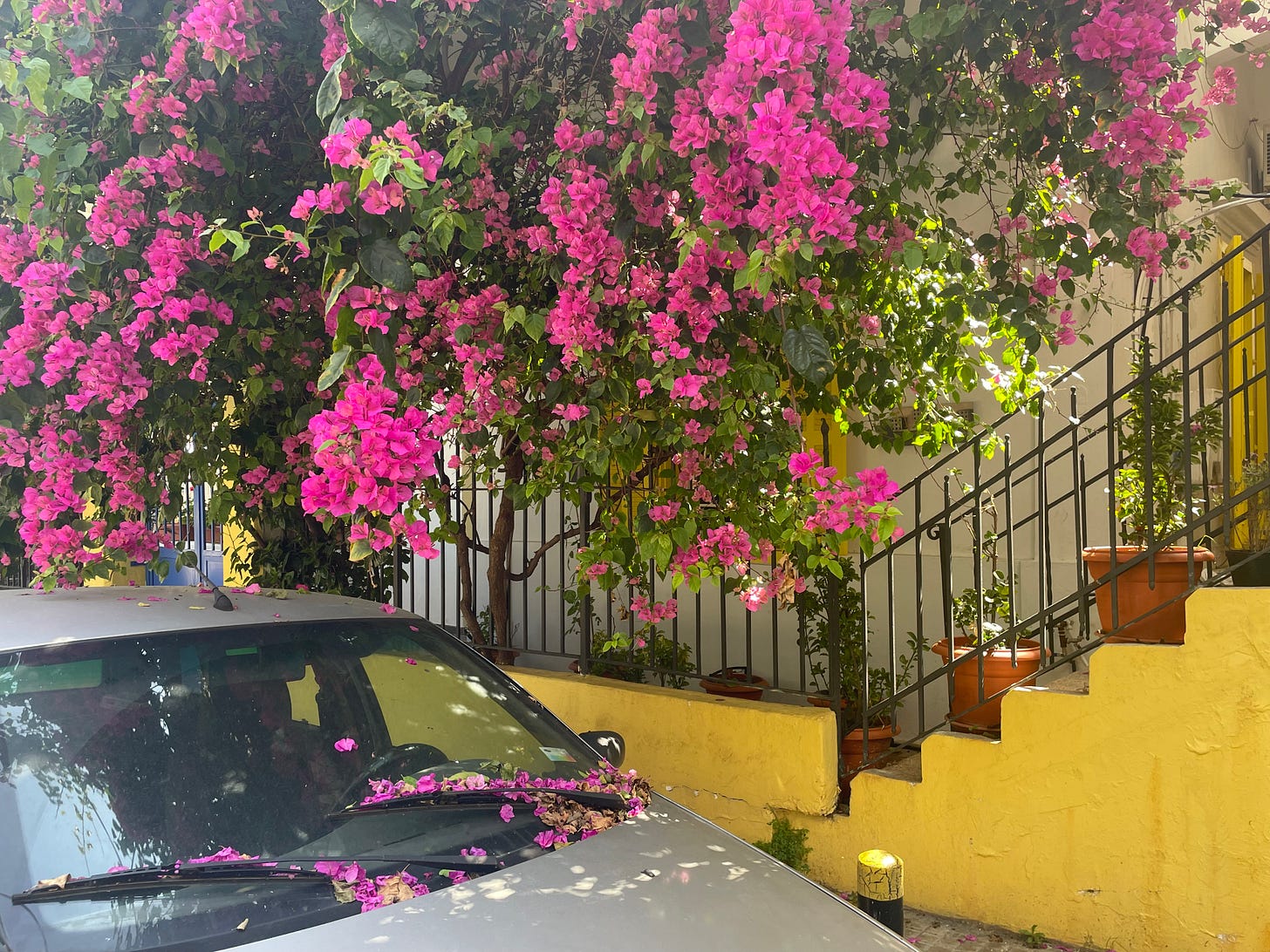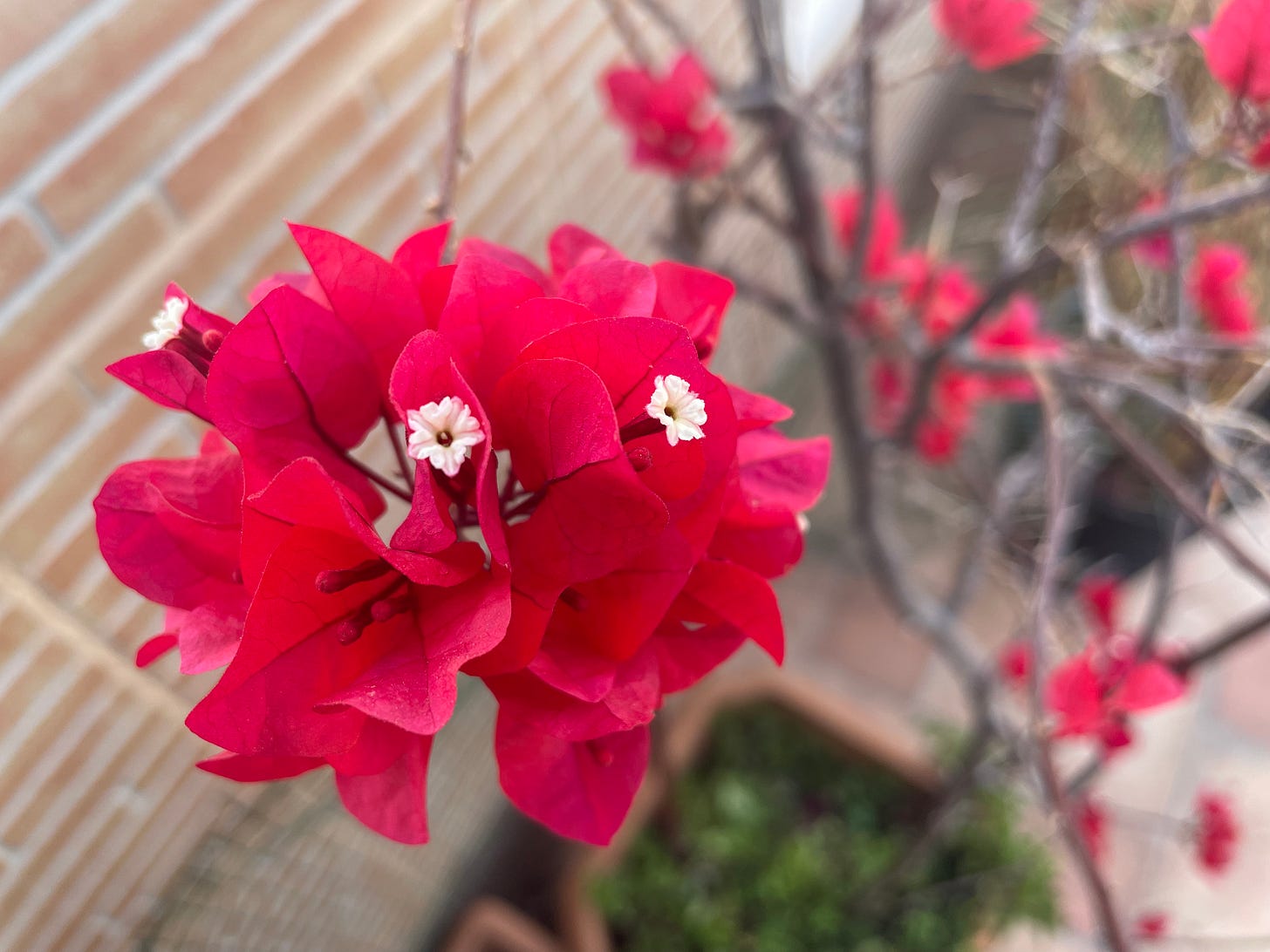Grapevine // April 2024
Bougainvillea, froyo, a print market, and stolen EVOO
Grapevine is a monthly list of recommended things to read (books not links), think about, experience, or see (mostly in Lebanon) including art exhibits, films, performances, or anything that I found inspiring. Think of it as a curated moodboard of micro-utopias that is up-to-date and focuses more on the physical rather than the digital.
Bougainvillea are eating Beirut.
I’ve been collecting these over the last two weeks because I love how they engulf buildings. I thought this was a recent fascination but it turns out, I had been collecting them last year too. I may not use this collection for anything other than the thrill of a spring scavenger hunt.
Bougainvillea are thorny ornamental plants that are part of the Nyctaginaceae (AKA four-o’clock) family, native to eastern South America.
“The plant is called four-o’clock because its flowers, from white and yellow to shades of pink and red, sometimes streaked and mottled, open in late afternoon (and close by morning).” - Britannica
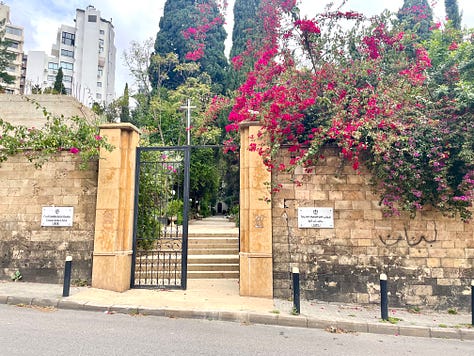
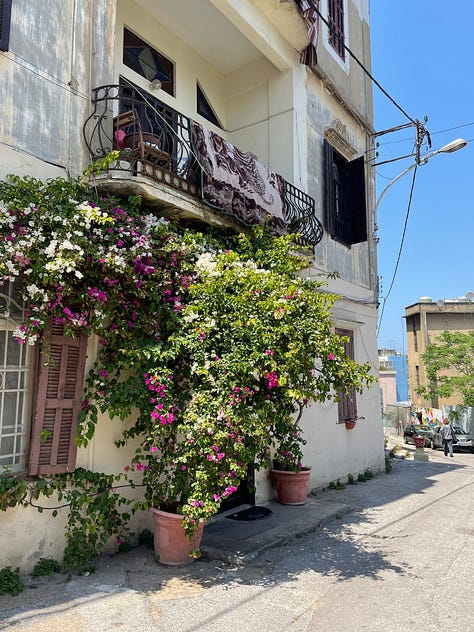
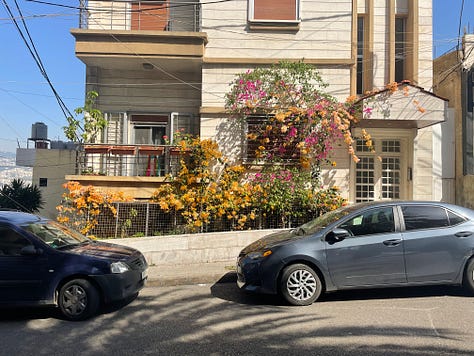

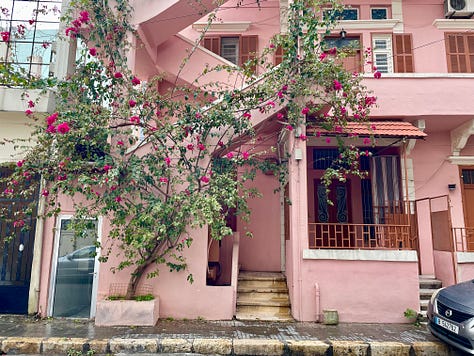

They’re sometimes called “paperflowers” because of their papery bracts. In other words, the pretty colored bits are the plant’s leaves, not its flowers. If you look closely at the bracts, you’ll see the tiny flower inside.
Here’s a quick summary of its backstory: Louis Antoine de Bougainville, the French Navy admiral who bougainvillea were named after, is not who discovered it. Turns out, an expert botanist from Burgundy named Jeanne Baret had something to do with its discovery. She hopped on a ship with Louis in the 1760s and she was the first woman to circumnavigate the globe —but only managed to do so by disguising herself as a man! She was Jean Baret, assistant to the expedition's official botanist, Philibert Commerçon. But they were more than that, they were involved. She didn’t get credit for her involvement in his work though.
According to the Sydney Morning Herald, it wasn’t until 2012 that a plant was finally named for her, Solanum baretiae.
In 2018, the International Astronomical Union (IAU) discovered a mountainous glacier on the dwarf planet Pluto and named it after our Jeanne. In the paper ”Compressional Ridges on Baret Montes, Pluto as Observed by New Horizons”, the authors write, “Glaciers, especially with deformed, folded structures, are rare for outer solar system icy bodies.” But that’s what we chose for Jeanne, something rare and really, really, really far away and out of sight.
Baret Montes, the perfect metaphor for how society celebrates adventurous women.
But then, I wanted to know what bougainvillea were called in Arabic...



